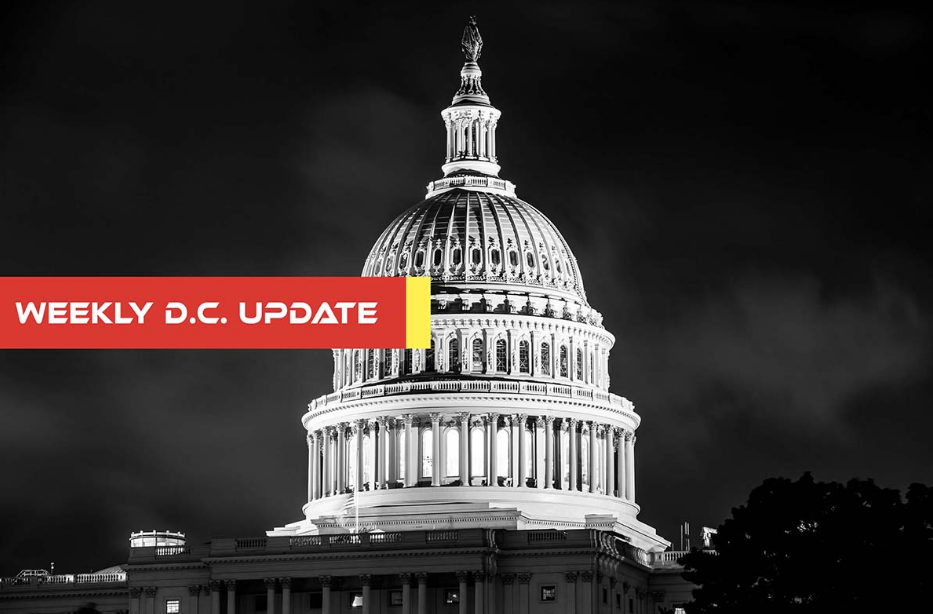
- Details
- By Native News Online Staff
WASHINGTON — In addition to articles already covered by Native News Online, here is a roundup of other news released from Washington, D.C. that impacts Indian Country recently.
USDA Forest Service Seeks Public Comment on Draft Guidance for Old Growth Management on National Forests
U.S. Department of Agriculture’s Forest Service has taken the next step to advance President Biden’s commitment to conserve old growth forests by publishing a draft environmental impact statement for the proposed national old growth forest plan amendment. The proposed amendment was posted on Friday in the Federal Register, and will be open for public comment for 90 days following publication.
The purpose of this amendment is to provide consistent guidance for the stewardship, conservation, and recruitment of old growth across national forests. The proposed amendment highlights the importance of proactive stewardship actions in managing threats to old growth forests, and to reduce wildfire risk, considering current and emerging climate-driven threats. It also calls for adaptive management strategies to be developed using local, geographically relevant information and the best available science, including Indigenous Knowledge.
“Recent scientific analysis shows us that many old-growth forests are under significant threat from climate change,” said Agriculture Secretary Tom Vilsack. “The Forest Service’s plan will help safeguard these iconic stands of trees through science-based management and conservation strategies that can be adapted to unique local circumstances on national forests. USDA is looking forward to receiving feedback on today’s draft proposal from Tribal, state and local governments, industry partners, conservation organizations, and many others; all of whom will be critical partners in the forest management and conservation actions needed to ensure the maintenance and growth of old-growth forests into the future.”
Bipartisan Infrastructure Law Investments Will Help Bring Clean, Reliable Drinking Water to Rural Communities
The Department of the Interior on Thursday announced a $43 million investment from President Biden’s Investing in America agenda for rural water projects that will provide clean, reliable drinking water to rural and Tribal communities. Investments through the Bureau of Reclamation will support six projects already under construction or in the planning phase in Iowa, Minnesota, Montana, New Mexico and South Dakota, and follows $733 million previously announced for rural water projects from the Bipartisan Infrastructure Law.
“With historic resources from President Biden's Investing in America, we are continuing to make significant investments to help states and Tribes to fundamentally alter current and future of water sustainability and conservation efforts across the country,” Secretary of the Interior Deb Haaland said. “With new resources from President Biden’s Investing in America agenda, we are expediting the completion of long-overdue rural water projects and ensuring that more Americans have clean water flowing from their taps through reliable water supplies, because no community should be left behind.”
Two tribes were part of distributed funds:
- $9.8 million for the Fort Peck Reservation/Dry Prairie in Montana to fund completion of the Pines Service Area Project. $54 million through the Bipartisan Infrastructure Law is being used in the Fort Peck-Dry Prairie Rural Water System to complete the final two phases of service lines within the reservation. Dry Prairie is completing service lines in the Scobey/Flaxville service areas and the Outlook/Westby service areas.
- $5 million for the Jicarilla-Apache Nation to continue data collection and design work. This builds on $22 million previously committed through the Bipartisan Infrastructure Law for the design and construction of project components of the previous phase of the rural water system.
More Stories Like This
Native News Weekly (August 25, 2024): D.C. BriefsUS Presidents in Their Own Words Concerning American Indians
2026 Native American 40 Under 40 Class Announced
Monday Morning: (January 5, 2026): Articles You May Have Missed This Past Weekend
Native News Weekly (January 4, 2026): D.C. Briefs
Help us defend tribal sovereignty.
At Native News Online, our mission is rooted in telling the stories that strengthen sovereignty and uplift Indigenous voices — not just at year’s end, but every single day.
Because of your generosity last year, we were able to keep our reporters on the ground in tribal communities, at national gatherings and in the halls of Congress — covering the issues that matter most to Indian Country: sovereignty, culture, education, health and economic opportunity.
That support sustained us through a tough year in 2025. Now, as we look to the year ahead, we need your help right now to ensure warrior journalism remains strong — reporting that defends tribal sovereignty, amplifies Native truth, and holds power accountable.
 The stakes couldn't be higher. Your support keeps Native voices heard, Native stories told and Native sovereignty defended.
The stakes couldn't be higher. Your support keeps Native voices heard, Native stories told and Native sovereignty defended.
Stand with Warrior Journalism today.
Levi Rickert (Potawatomi), Editor & Publisher


